We’ve all seen the following nested framework for AI, machine learning, and generative AI. And chances are, unless you’re a developer of AI systems, it didn’t help you understand the significant differences between these wildly different tools either.
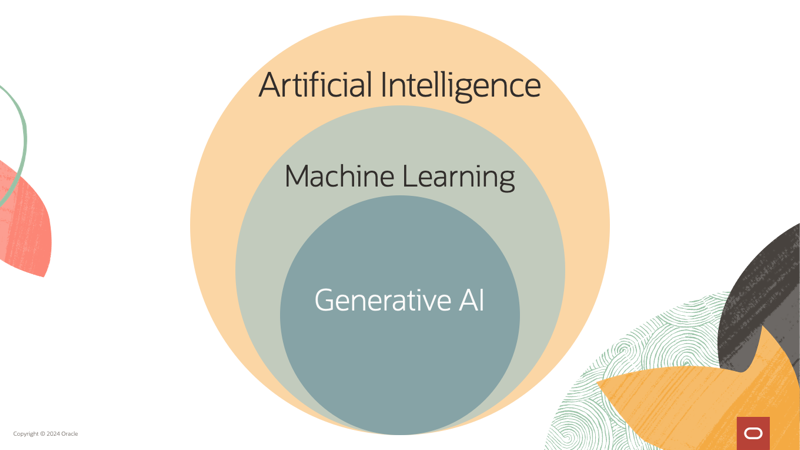
To help marketers better understand the differences, we’ve created five frameworks that illuminate the strengths and weaknesses of these tools and how they can be used.
Time-Consuming vs. Time-Prohibitive Tasks
If you’re looking for help with tasks that would be impossible for people to reasonably do, then you’re in the realm of machine learning. Want to send each of your subscribers your next email campaign at the time they’re most likely to engage with it based on their past open and click times? No brand has ever had people try to do that individual-level analysis. But machine learning send time optimization tools have been doing that for a long time.
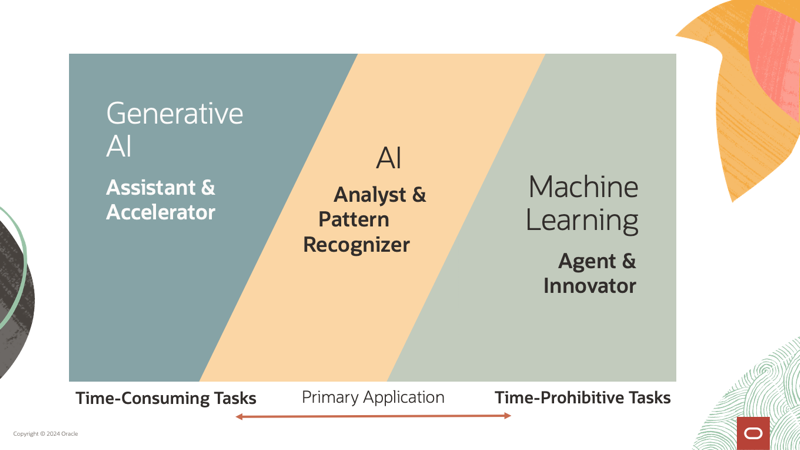
However, if you’re looking to accelerate the tasks that your marketers currently do, then generative AI offers intriguing possibilities. Caution is still very much warranted when using GenAI for copy, images, and code, but thoughtful use by experienced copywriters, designers, and coders can make these tools the strong assistants they are designed to be.
Classic AI, which excels as a pattern recognizer and analyst, sits somewhere between machine learning and GenAI on this spectrum.
Explore AI opportunities throughout the email production process.
Change Management Challenges
All technology implementations involve change management, but some involve much more than others. For instance, because GenAI generally takes on tasks that are currently done by people, the change management challenges are much greater than they are with classic AI and machine learning, which are much more likely to perform previously unattempted tasks.
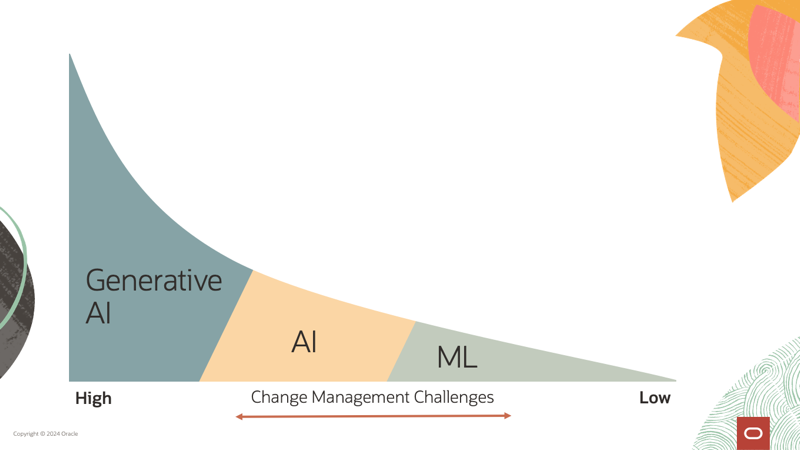
Time-Savings vs. Greater Performance
Until GenAI came along, AI’s sole purpose was almost always to boost performance. If a brand was using a machine learning-powered subject line optimization tool and it didn’t increase opens and clicks, it was dropped or replaced. With GenAI, the focus has been primarily on time-savings, since most LLMs currently don’t have access to much if any zero- and first-party data from which to make performance-based decisions.
However, this distinction has been lost on some marketers, who think that LLMs are naturally going to produce higher performing copy. Many have been pleasantly surprised to learn that their experience and deep understanding of their audience gives them the edge.
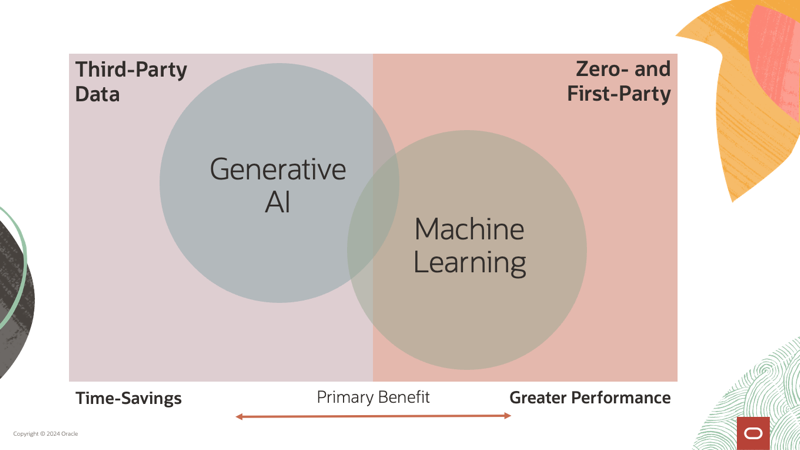
It’s also worth being mindful of how benefits scale. For instance, time-savings scale across employees in terms of hours saved. However, greater performance scales across campaigns. At most enterprises, campaign-based benefits scale much higher than employee-based benefits.
Of course, the caveat here is that GenAI models are not only improving, but retrieval-augmented generation (RAG) and other model-training methods are allowing GenAI models to incorporate learnings from zero- and first-party data. That means in the future, we’ll see increasing overlap between GenAI and machine learning, with brands capturing a degree of both time-savings and greater performance.
How the coming changes will impact digital marketing in 2030.
Many Subjective Answers vs. One Objective Answer
GenAI excels at helping marketers tackle questions that don’t have one definitive answer. Given the messaging of this email, what are some potential subject lines? Rewrite this copy to make it more appealing to executives in manufacturing industries? Given these value propositions, what are some others for this product? Those are the kinds of open-ended questions that GenAI is great at answering.

On the other hand, machine learning excels at giving marketers one objective answer based on available data. What’s the best time to send this push campaign to each subscriber based on their historical click times? What are the three products we should recommend to each email subscriber based on their past purchases and recent browsing activity? Machine learning models can return discrete answers to these questions and more.
Some Assembly Required vs. Final Product
Relatedly, because GenAI excels at open-ended questions, it doesn’t tend to provide answers that are completely ready to be shown to your customers. Typically, you’ll need to curate or edit the output before it’s customer-facing quality. Of course, narrowing the source material through RAG or other training methods can create much more complete answers for some prompts.
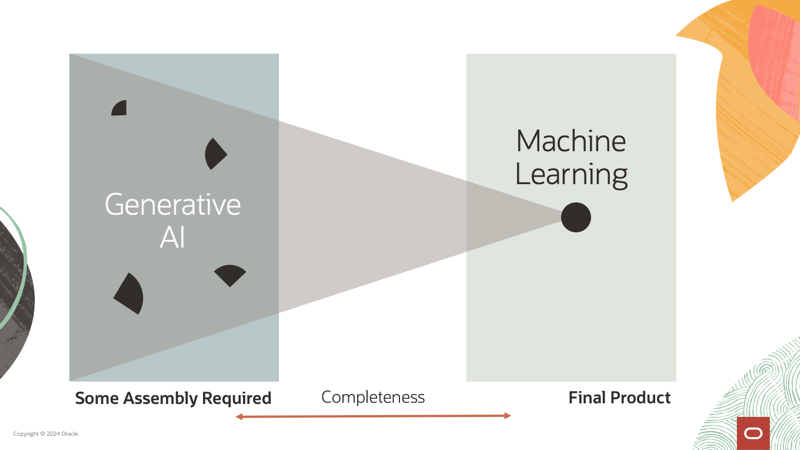
On the other hand, machine learning models are designed to deliver a final product that you can use without human review—whether that’s an optimized subject line, a list of subscribers that’s optimized to maximize performance and minimize churn, or the best alternative products to recommend to subscribers who abandoned a particular product.
The concerns and opportunities for marketers when using generative AI for copy, images, and code.
More Overlap Ahead
As already mentioned, the boundaries between generative AI and machine learning systems will blur in the years ahead as more companies create private GenAI tools that are trained on their zero- and first-party data and tailored to their specific needs. However, the issues around these tools won’t change dramatically.
- Is this AI tool performing time-consuming tasks currently done by people or time-prohibitive tasks that aren’t?
- Given the impact on existing roles, how much change management is needed?
- Is the AI tool saving us time or boosting performance?
- Is the output of the AI tool able to be used directly by marketing campaigns or is human intervention and effort needed to make it usable in a customer-facing capacity?
Marketers, keep these questions in mind as you explore AI tools.
—————
Need help with your email marketing strategy? Oracle Digital Experience Agency has hundreds of marketing and communication experts ready to help Responsys, Eloqua, Unity, and other Oracle customers create stronger connections with their customers and employees—even if they’re not using an Oracle platform as the foundation of that experience. With a 94% satisfaction rate, our clients are thrilled with the award-winning work our creative, strategy, and other specialists do for them, giving us an outstanding NPS of 82.
For help overcoming your challenges or seizing your opportunities, talk to your Oracle account manager, visit us online, or email us at OracleAgency_US@Oracle.com.
To stay up to date on customer experience best practices and news, subscribe to Oracle Digital Experience Agency’s award-winning, twice-monthly newsletter. View archive and subscribe →


